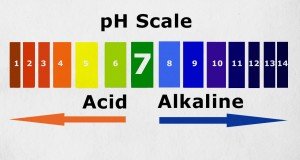Cancer survival NEWS: Breast cancer patients discover the true value of physical activity
(NaturalHealth365) Conventionally speaking, cancer survival rates rarely tell the whole story about the life of a cancer patient. You see, cancer survival – defined by Western medicine – relates to “people who survive a certain type of cancer for a specific amount of time.” It has nothing to do with their quality of life.
And, the time frame most doctors look at is the first 5 years – from a diagnosis. In other words, if a person dies in 5 years and one day – this would be considered a “successful” cancer survival statistic.
Here’s the issue: the pharmaceutical industry wants us to believe that our only option for ‘cancer survival success’ is to call the doctor, follow any advice given to receive toxic ‘therapies’ and hope for the best. Yet, there are literally hundreds of non-toxic ways to kill cancer cells – that do not harm to the rest of the body.
Today, we’ll focus our attention on a SIMPLE, yet scientifically-based way to cut your risk of cancer-related death by nearly half, and reduce your risk of cancer recurrence by as much as one-third.
The right form (and amount) of physical exercise significantly INCREASES cancer survival rates
Getting a cancer diagnosis is a frightening and major life event – something that nearly 1 out of 3 of us will experience in our lifetimes. But it can also be a major wake up call that reminds us to take more control over the controllable factors of our lives – especially how much exercise we get.
Editor’s note: When we say “the right form” of exercise, we mean to emphasize the importance of understanding how to do each activity correctly – based on your fitness level and health condition. Simply put, to reduce your risk of cancer, there’s great value in both aerobic exercise and strength training.
And far beyond improving your strength, energy, and mood, exercise offers a specific benefit for people diagnosed with breast cancer and other types of cancer. In fact, according to a recent systematic review of 36 studies involving over 68,000 combined cancer survivors, exercise will actually:
- Increase your chances of cancer survival by as much as 44%
- Decrease your risk of cancer recurrence by as much as 35%
- Decrease the risk and severity of adverse cancer treatment effects
This incredible data were published in the January 2017 issue of the peer-reviewed journal Epidemiologic Reviews. The paper’s authors clearly summarize their findings by saying: “exercise is an important adjunct therapy in the management of cancer.”
And another study published in the journal Breast Care found that women diagnosed with breast cancer who participated in a guided lifestyle intervention program successfully lost weight and had higher rates of disease-free cancer survival compared to women who received only “general” recommendations.
In fact, the women who completed the intervention program were nearly 50 percent more likely to have disease-free survival than the control group.
This monumental data is consistent with a fact that the authors themselves point out: “obesity and a low level of physical activity are not only associated with a higher risk of developing breast cancer, but also with an increased risk for recurrence and reduced survival in breast cancer patients.”
Exercise is ESSENTIAL for cancer survivors – as well as for anyone looking to avoid cancer altogether
At this point, we should reiterate a glaringly important and promising fact:
Beyond improving your chances of surviving cancer, exercise also reduces your risk of getting cancer in the first place.
In fact, a 2016 study published in the esteemed journal JAMA Internal Medicine revealed that regular physical activity significantly reduces a person’s risk for esophageal cancer, liver cancer, stomach cancer, breast cancer, colon cancer, endometrial cancer, kidney cancer, and myeloid leukemia.
How much exercise do you need? According to the American Cancer Society, most adults should aim for at least 150 minutes of moderate intensity exercise per week – which you can accomplish just by walking for 30 minutes, 5 days a week, at around 3 miles per hour.
For a more advanced approach that’s probably more effective at reversing obesity and promoting fat loss, you should aim for at least 75 minutes of vigorous activity each week – or more. Obviously, higher levels of physical activity will depend greatly on your conditioning and health status.
No matter what state your current health is in, it’s never the wrong time to commit to regular exercise.
And, just to be clear – as we advise you to do with any major lifestyle or dietary change – chat with your integrative doctor or (better yet) a well-trained, expert in exercise training. This way, you’ll avoid any unwanted mistakes and get better results faster.
Sources used for this article include:
MayoClinic.org
IntegrativePractitioner.com
Cancer.org
Cancer.org
NIH.gov
AICR.org











